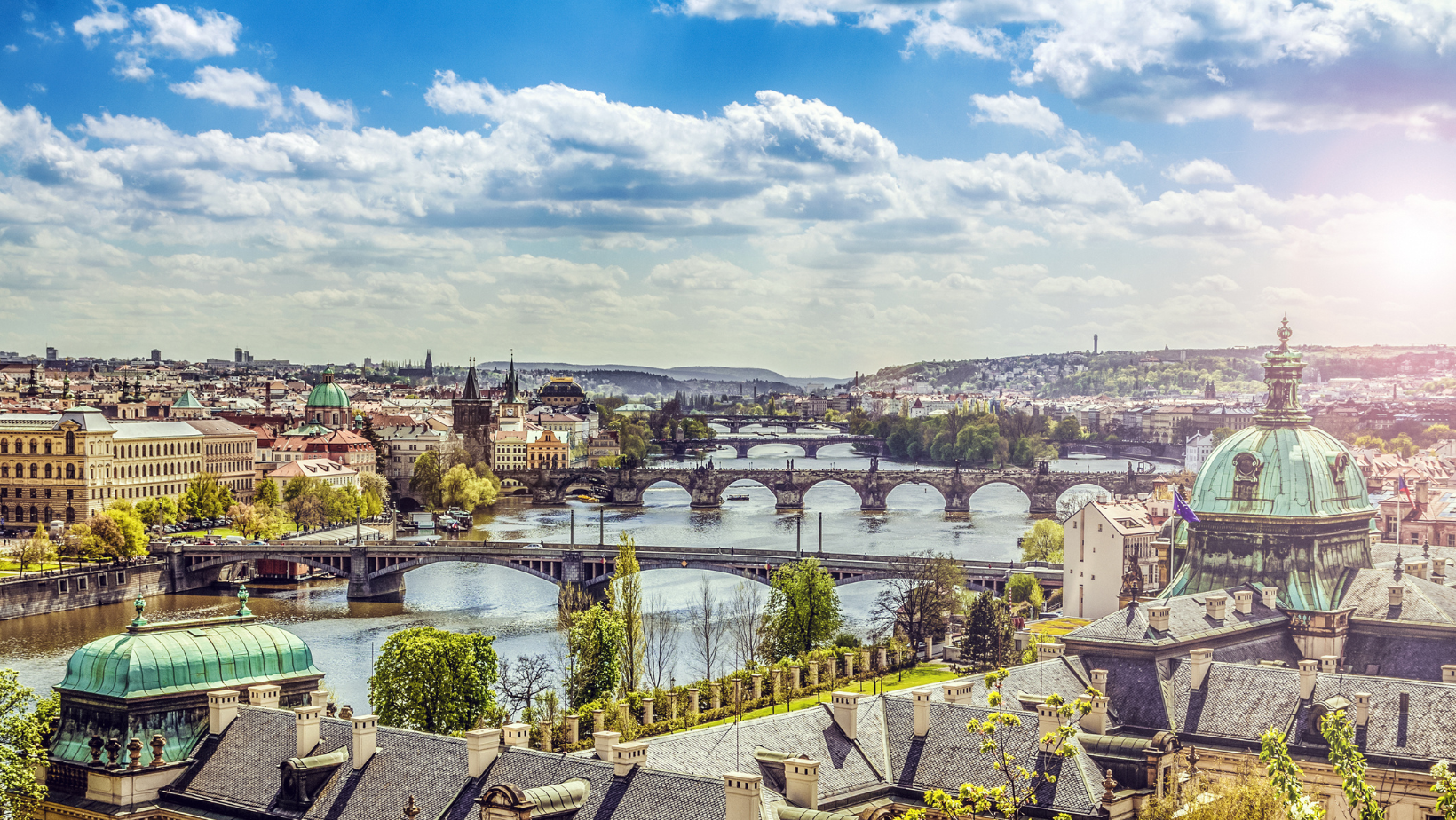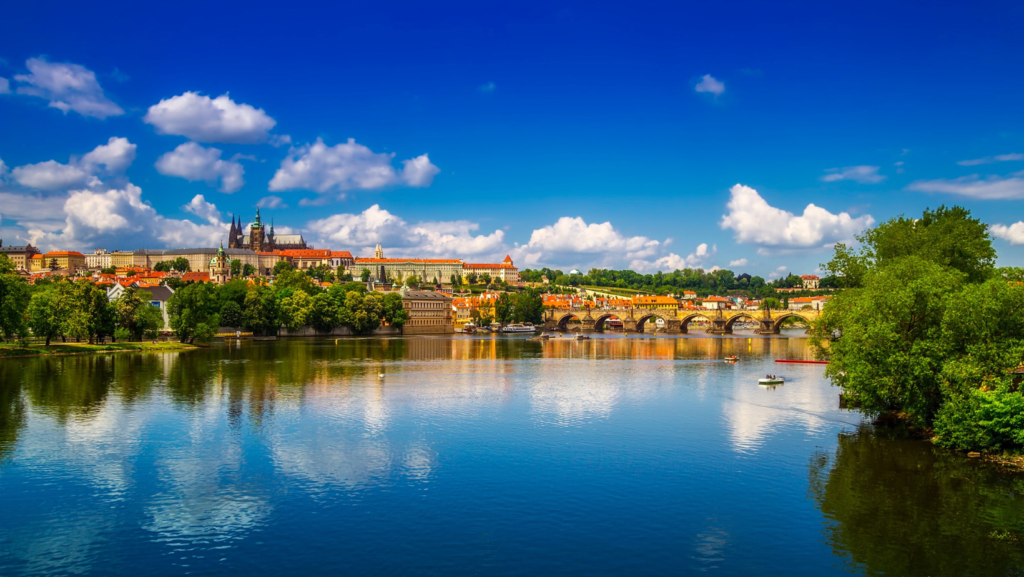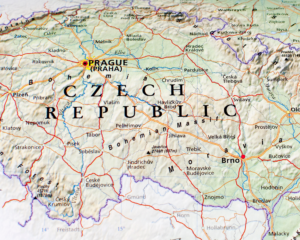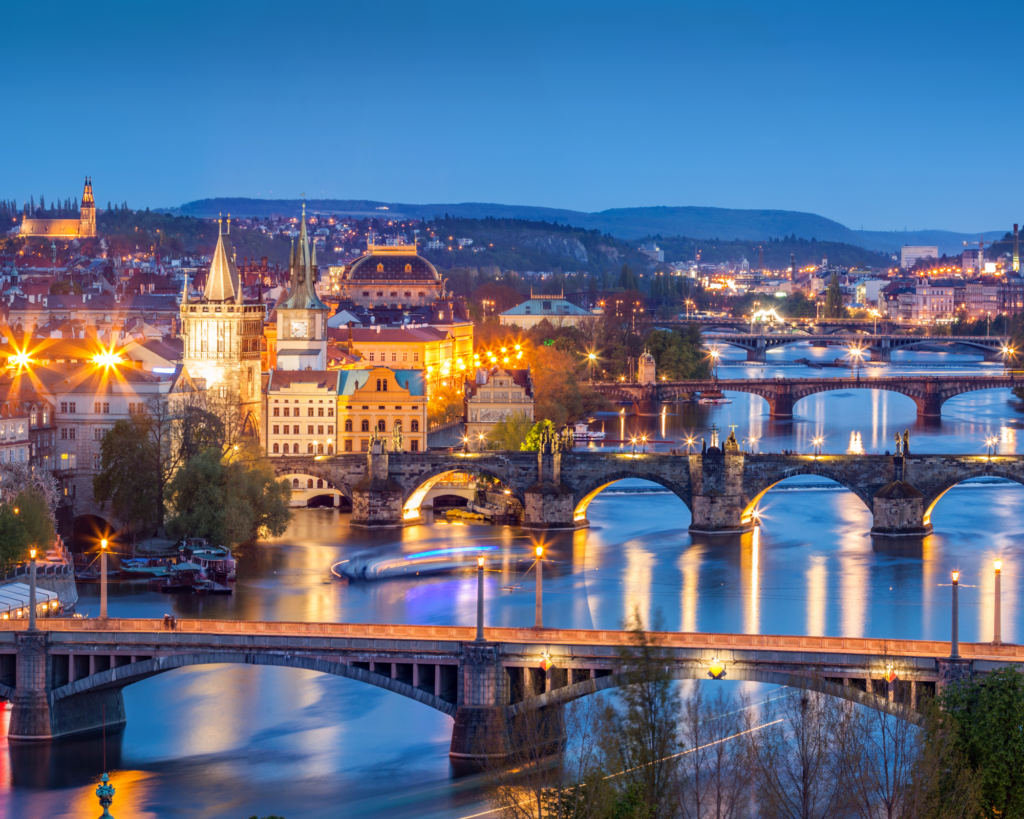

Czech Republic in map
The Czech Republic, also known as Czechia, is a landlocked country in Central Europe. Historically known as Bohemia, it is bordered by Austria to the south, Germany to the west, Poland to the northeast, and Slovakia to the southeast. The Czech Republic has a hilly landscape that covers an area of 78,871 square kilometers (30,452 sq mi) with a mostly temperate continental and oceanic climate. The capital and largest city is Prague; other major cities and urban areas include Brno, Ostrava, Plzeň and Liberec. The Czech Republic is a member of the United Nations, NATO, the European Union, the OECD, the OSCE, and the Council of Europe.
The Duchy of Bohemia was founded in the late 9th century under Great Moravia. It was formally recognized as an Imperial State of the Holy Roman Empire in 1002 and became a kingdom in 1198. Following the Battle of Mohács in 1526, the whole Crown of Bohemia was gradually integrated into the Habsburg monarchy. The Protestant Bohemian Revolt led to the Thirty Years’ War. After the Battle of White Mountain, the Habsburgs consolidated their rule. With the dissolution of the Holy Empire in 1806, the Crown lands became part of the Austrian Empire.

John Lennon Wall The John Lennon Wall is a street art and graffiti wall in Prague that has been decorated with love poetry and political messages since the 1960s and with street art inspired by John Lennon and parts of John Lennon and Beatles song lyrics since the 1980s , is painted. The wall belongs […]
Subscribe to our newsletter
In the 19th century, the Czech lands became more industrialized, and in 1918 most of it became part of the First Czechoslovak Republic following the collapse of Austria-Hungary after World War I.Czechoslovakia was the only country in Central and Eastern Europe to remain a parliamentary democracy during the entirety of the interwar period. After the Munich Agreement in 1938, Nazi Germany systematically took control over the Czech lands. Czechoslovakia was restored in 1945 and three years later became an Eastern Bloc communist state following a coup d’état in 1948. Attempts to liberalize the government and economy were suppressed by a Soviet-led invasion of the country during the Prague Spring in 1968.
In November 1989, the Velvet Revolution ended communist rule in the country and restored Democracy. On 31 December 1992, Czechoslovakia was peacefully dissolved, with its constituent states becoming the independent states of the Czech Republic and Slovakia. The Czech Republic is a unitary parliamentary republic and developed country with an advanced, high-income social market economy. It is a welfare state with a European social model, universal health care and free-tuition university education. It ranks 16th in the UN inequality-adjusted human development, 32nd in the Human Development Index and 24th in the World Bank Human Capital Index. As of 2022, it ranks as the 8th safest and most peaceful country and 25th in democratic governance.
The traditional English name “Bohemia” derives from Latin: Boiohaemum, which means “home of the Boii” (a Gallic tribe). The current English name comes from the Polish ethnonym associated with the area, which ultimately comes from the Czech word Čech. The name comes from the Slavic tribe and, according to legend, their leader Čech, who brought them to Bohemia, to settle on Říp Mountain. The etymology of the word Čech can be traced back to the Proto-Slavic root *čel-, meaning “member of the people; kinsman”, thus making it cognate to the Czech word člověk (a person).
The country has been traditionally divided into three lands, namely Bohemia in the west, Moravia (Morava) in the east, and Czech Silesia (Slezsko; the smaller, south-eastern part of historical Silesia, most of which is located within modern Poland) in the northeast. Known as the lands of the Bohemian Crown since the 14th century, a number of other names for the country have been used, including Czech/Bohemian lands, Bohemian Crown, Czechia and the lands of the Crown of Saint Wenceslaus. When the country regained its independence after the dissolution of the Austro-Hungarian empire in 1918, the new name of Czechoslovakia was coined to reflect the union of the Czech and Slovak nations within one country.

